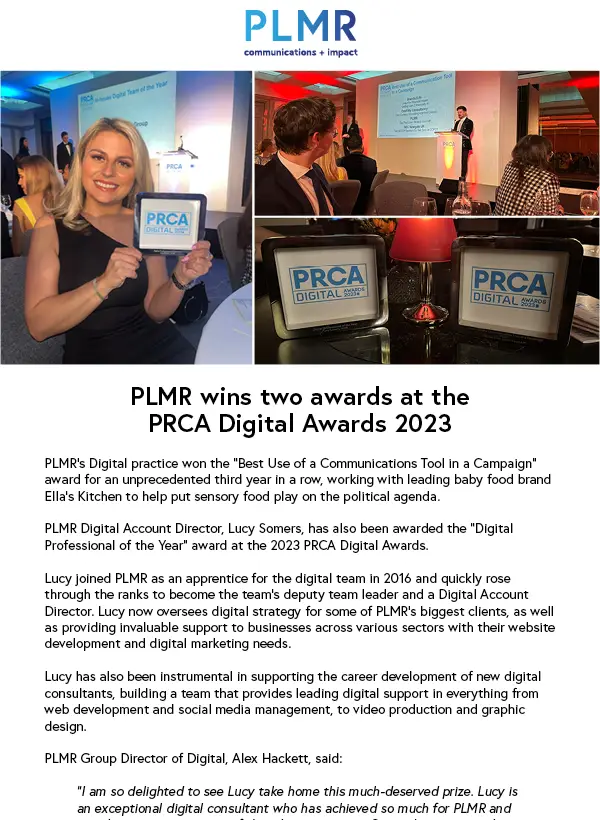A well-written press release is essential to help you and your organisation win coverage, but it is only half of your journey to having your story published in the media. The second part, the sell-in of your story to journalists, is just as crucial to ensure that your press release will land.
PLMR conducts sell-ins on behalf of our clients every day to help them achieve their objectives and here are some of our top tips that you can follow to maximise your chances of having your story noticed and covered by journalists.
Targeted media list
The first step is to prepare a media list of the journalists you want to target and speak to. You should make sure that your story will be relevant to them – either because of their specific role i.e. Social Affairs Correspondent, Environment Editor, or based on their recent stories and reporting. Doing your research and getting this step right is crucial as busy journalists will be less likely to notice your story if it doesn’t directly relate to their areas and topics of interest.
Exclusives and embargoes
Next you should think about the ultimate goal of your sell-in – is it to secure coverage in one particular publication, or is it to win multiple pieces of coverage across different publications? If the former, you should consider offering your story as an exclusive to a journalist from that specific outlet – this will increase the chances of them being interested in the story as they will be able to ‘break’ the news ahead of other publications. If the latter, you can issue your press release widely to your full media list, and liaise with multiple journalists at the same time.
It might also be a good idea to first issue your story under embargo (midnight embargoes are the most popular) in order to give interested journalists time to develop the story and to liaise with you regarding any questions they might have or any additional information they need before they can publish.
Distribution and follow-ups
Once you are ready to issue your press release, you should distribute it early in the morning in order to reach journalists’ inboxes before their morning conference where editors decide the stories that will be pursued that day.
After the initial distribution of your press release, you should spend time speaking with all of your targets and make sure to tailor and personalise your conversation points to highlight why your story should be of particular interest to them.
Sunday newspapers
Sunday newspapers are a great place to land exclusive stories that take a new angle on the events from the week. The main editorial conference for Sunday papers happens on Thursday mornings, so you should aim to pitch your story ahead of this to maximise your chances of winning coverage.
New angles and hooks
Lastly, if you are having difficulty landing your story and are receiving feedback that it’s not quite right for your target publications, your efforts are not wasted! Take the time to re-work your pitch and press release from a different, new angle. You can do this by leading with different data or by developing your media package further with new case studies. Additionally, it’s worth keeping an eye on the news agenda as a new ‘hook’ for your press release could appear at any moment.
Contacting journalists to win coverage can be a challenge without the right contacts, but these top tips from PLMR should help you navigate your sell-in.





